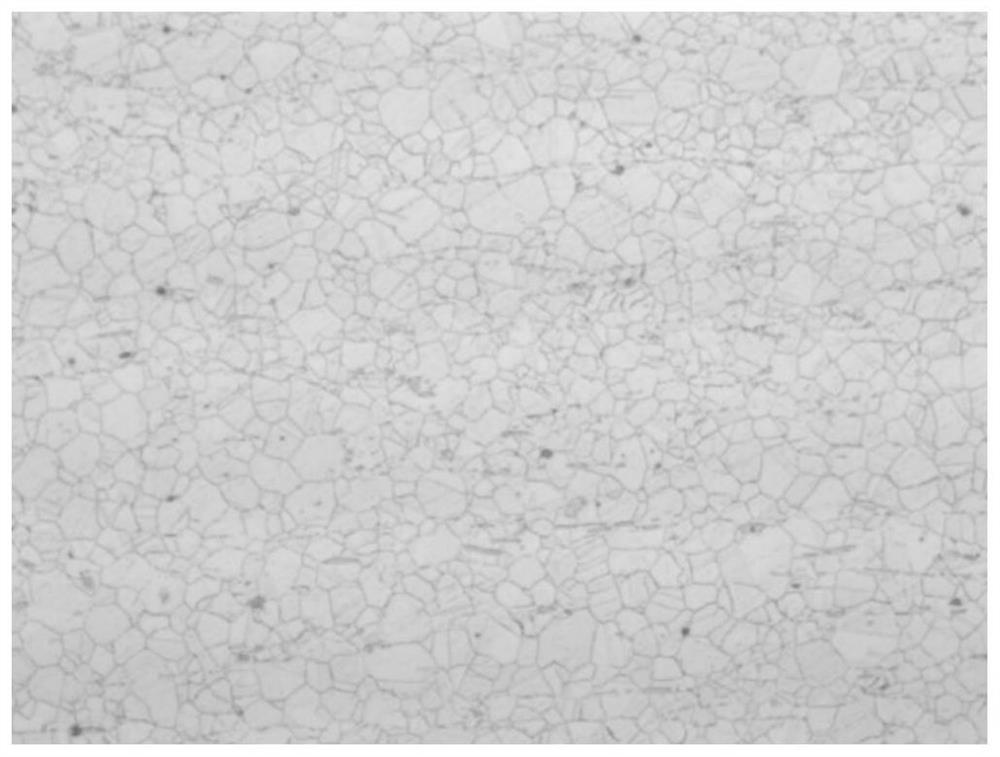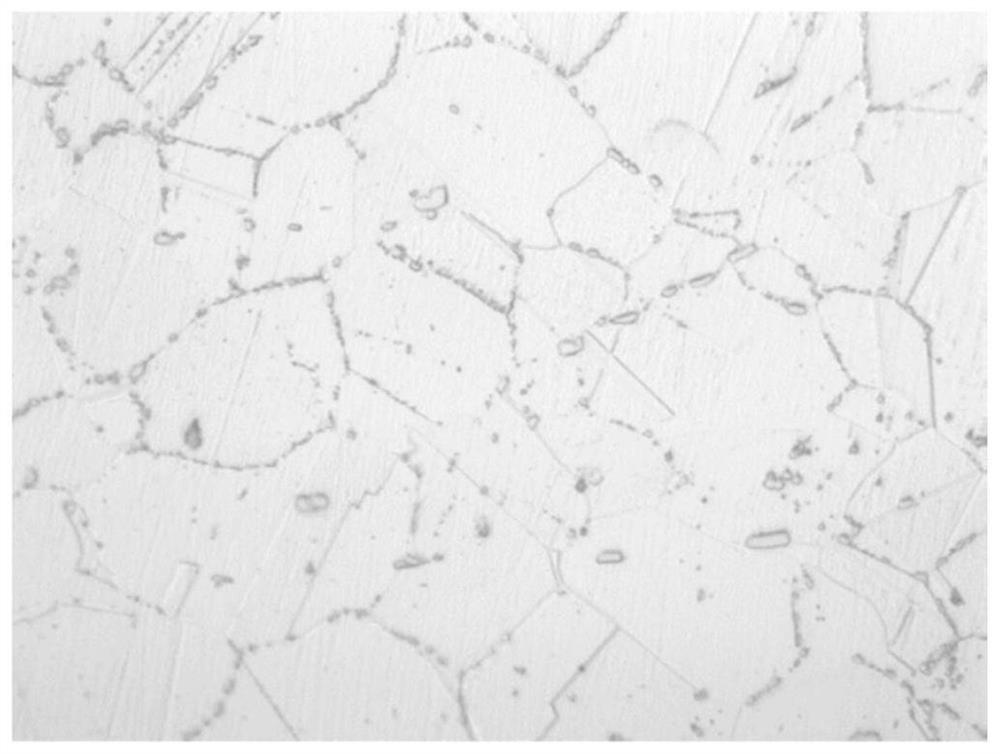Manufacturing method of fine-grain NiCr20TiAl alloy forged material
A manufacturing method and alloy technology, applied in the field of metal material manufacturing, can solve problems such as inapplicability
- Summary
- Abstract
- Description
- Claims
- Application Information
AI Technical Summary
Problems solved by technology
Method used
Image
Examples
Embodiment 1
[0019] A method for manufacturing a fine-grained NiCr20TiAl alloy forging material. First, the NiCr20TiAl alloy is melted in a 1-ton vacuum induction furnace, and an electrode with a diameter of 290 mm is cast under vacuum conditions. The mass fraction of each ingredient is shown in the table below.
[0020] element Cr Ti Al C Mo Ni Content (mass fraction%) 20.5 2.6 1.7 0.07 0.25 Remain
[0021] In the second step, the electrode is remelted into an electroslag ingot with a diameter of 390mm using argon protection electroslag, wherein the melting rate is 3.5kg / min, and the flow rate of argon gas is 30L / min.
[0022] The third step is to perform high-temperature homogenization heat treatment on the electroslag ingot in a resistance heating furnace. The homogenization treatment process is 1200 ° C for 48 hours, and the furnace is cooled.
[0023] In the fourth step, a 2,000-ton fast forging machine is used to open the ingot to form a material. ...
Embodiment 2
[0032] A method for manufacturing a fine-grained NiCr20TiAl alloy forging material. First, the NiCr20TiAl alloy is melted in a 1-ton vacuum induction furnace, and an electrode with a diameter of 290 mm is cast under vacuum conditions. The mass fraction of each ingredient is shown in the table below.
[0033]
[0034] In the second step, the electrode is remelted into an electroslag ingot with a diameter of 390mm using argon protection electroslag, wherein the melting rate is 4kg / min, and the argon gas flow rate is 30L / min.
[0035] The third step is to perform high-temperature homogenization heat treatment on the electroslag ingot in a resistance heating furnace. The homogenization treatment process is 1200 ° C for 48 hours, and the furnace is cooled.
[0036] In the fourth step, a 2,000-ton fast forging machine is used to open the ingot to form a material. The heating temperature of the ingot is 1150°C. The specific process is as follows:
[0037] First fire: upsetting th...
Embodiment 3
[0045] A method for manufacturing a fine-grained NiCr20TiAl alloy forging material. First, the NiCr20TiAl alloy is melted in a 1-ton vacuum induction furnace, and an electrode with a diameter of 290 mm is cast under vacuum conditions. The mass fraction of each ingredient is shown in the table below.
[0046]
[0047] In the second step, the electrode is remelted into an electroslag ingot with a diameter of 390 mm using argon protection electroslag, wherein the melting rate is 3 kg / min, and the argon gas flow rate is 10 L / min.
[0048]The third step is to perform high-temperature homogenization heat treatment on the electroslag ingot in a resistance heating furnace. The homogenization treatment process is 1180 ° C for 72 hours, and the furnace is cooled.
[0049] In the fourth step, a 2,000-ton fast forging machine is used to open the ingot into a material. The heating temperature of the ingot is 1080°C. The specific process is as follows:
[0050] First fire: upsetting the...
PUM
| Property | Measurement | Unit |
|---|---|---|
| Diameter | aaaaa | aaaaa |
Abstract
Description
Claims
Application Information
 Login to View More
Login to View More - R&D
- Intellectual Property
- Life Sciences
- Materials
- Tech Scout
- Unparalleled Data Quality
- Higher Quality Content
- 60% Fewer Hallucinations
Browse by: Latest US Patents, China's latest patents, Technical Efficacy Thesaurus, Application Domain, Technology Topic, Popular Technical Reports.
© 2025 PatSnap. All rights reserved.Legal|Privacy policy|Modern Slavery Act Transparency Statement|Sitemap|About US| Contact US: help@patsnap.com



